Seville Cathedral the top sight-seeing site in Spanish city
From grand cathedrals to flamenco, this is an Andalusian city full of spectacle.
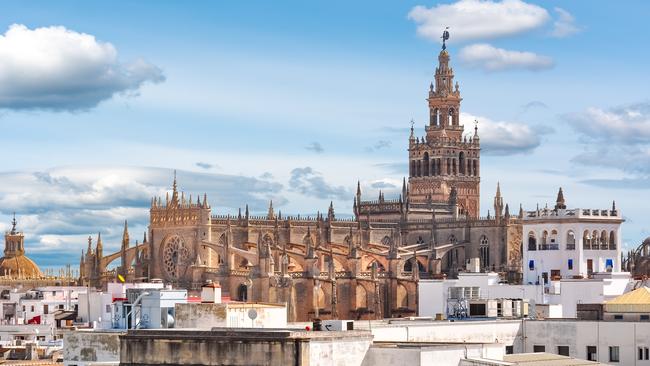
1 Seville basks in its reputation as one of Europe’s warmest cities, averaging 300 days of sunshine a year. We arrive in January, to three days of (ahem) heavy showers. Nonetheless, the Andalusian capital’s irrepressible personality bursts through the curtain of rain: what’s not to love about an eminently walkable city with winding cobblestoned streets; jaw-dropping Moorish and medieval monuments and bitter orange trees, heavy with fruit, that flourish on city streets? At the top of many travellers’ lists, with good reason, is Seville Cathedral, the world’s biggest gothic cathedral. Constructed on the site of a former mosque, its Renaissance and baroque extravagance reflects the 15th-century architects’ declaration that “we’re going to construct a church so large future generations will think we were mad”. Six centuries on, the long queue to get in, even in low season, is testament to the architects’ inspired madness. (We avoid the queue by buying a combined entry ticket from the nearby Iglesia del Divino Salvador. This gives you direct entry to that church — another heritage gem — and the cathedral.) The cathedral takes us several hours to explore, as it’s a museum and a place of worship, boasting a super-sized organ, a host of ornate side chapels, soaring gilt altarpiece (with more bling than a Saudi palace), art works by Murillo and Goya and explorer Christopher Columbus’s tomb. Make sure you don’t miss the stuffed crocodile; suspended overhead, it’s a replica of the real, live one donated to a Spanish king by an Egyptian sultan; catedraldesevilla.es.
-
2 The Cathedral’s Giralda is Seville’s most recognisable landmark. The original 12th-century minaret was later converted into a Christian bell tower but its refined Muslim motifs still preside over Seville’s gothic quarter. It’s a relatively easy walk up 34 terracotta ramps to the top, from where you can drink in fantastic 360-degree views of this heritage-rich city. Spanish guards once rode their horses up the 34 ramps, but when we visit there is a festive atmosphere as everyone from fit grandmothers to preschoolers attempts the climb;
visitasevilla.es/en.
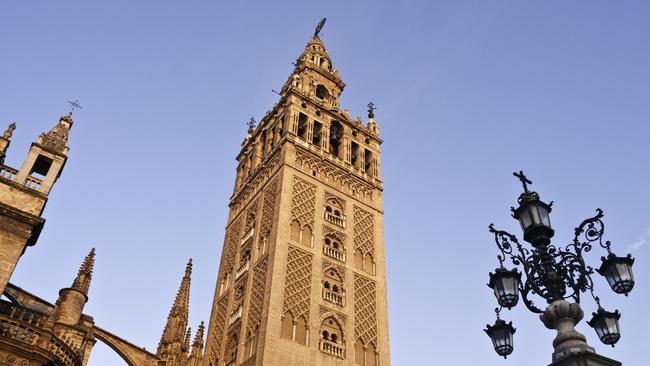
-
3 Just a few minutes’ walk from the cathedral is the Real Alcazar, home to Muslim and Christian kings throughout the past 10 centuries and the oldest royal palace still in use in Europe. Like the cathedral, it’s an architectural fusion of subtle Islamic and bombastic Christian styles (and it famously doubled as a palace on Game of Thrones). I visit on our final, sun-splashed day (yes!) in Seville, and am bowled over by the palace gardens that feel like a sprawling oasis in the middle of the densely populated old city; its fountains, pools and underground baths, tropical palms and a hedged maze give way to pine trees and park-like lawns roamed by peacocks. Check out the secret palace passage installed by 14th-century monarch King Pedro, so he could avoid his closest relatives, who wanted to kill him. I discover later that his nickname was Pedro the Cruel, and he was notorious for killing off his closest advisers — and his French wife;
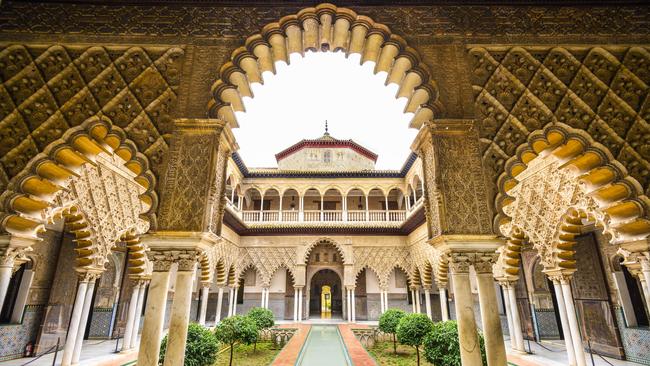
-
4 Nothing encapsulates Seville’s soulful yet spirited vibe more than its flamenco “tablaos’’ (traditional flamenco bars). We attend a pre-dinner show in the inner El Arenal district that starts with Andalusian wine and sangria and segues into virtuosic singing, guitar-playing and of course, dancing that build to a crescendo of pleasure … or is it pain? The performances are so intense it’s hard to tell. We sit so close to the dancer as her furiously drumming feet burn up the tiny stage that her shawl seems to brush our eyelids.
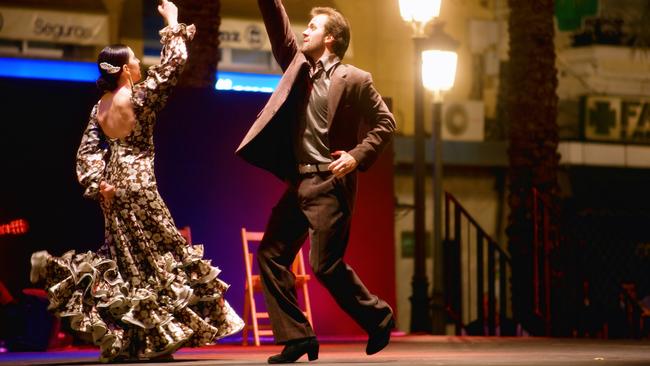
-
5 Seville’s old city streets are so narrow a taxi stopping to let passengers get their suitcases out causes instant gridlock and a symphony of horn-blowing. Don’t let that stop you exploring the alleyways and Insta-friendly plazas of the monumental district and Santa Cruz, where the tiles, cobblestones, imposing doorways and tiny cave-like bars conspire to create a wanderer’s wonderland. My most exotic find? An all-singing, all-dancing choir of young men who bust out their moves while in traditional peasant gear and a shop specialising in matador’s uniforms, from jewelled bolero jackets to crocheted black caps with Mickey Mouse-like ears.
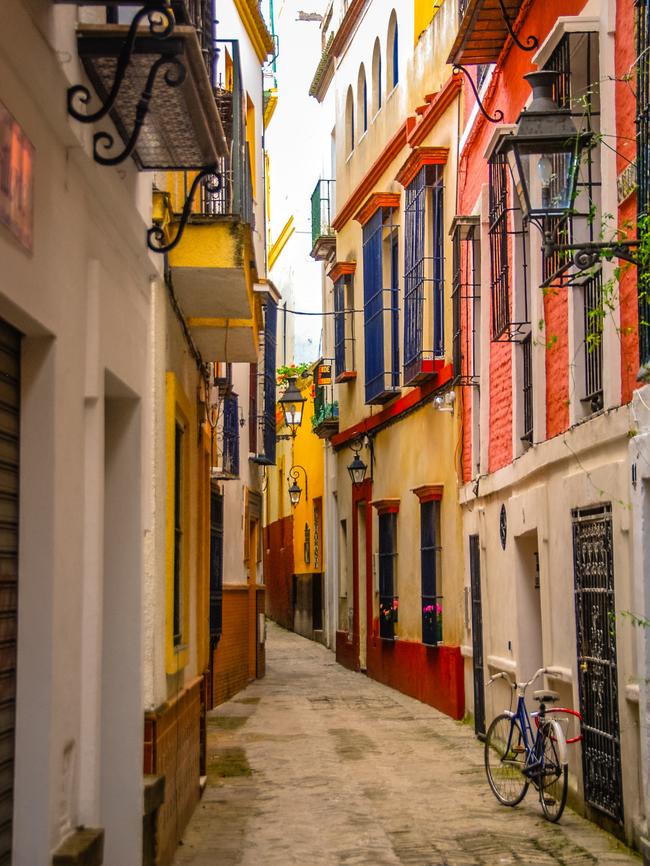
-
6 The raffish riverside neighbourhood of Triana is the epicentre of the geometric tiles and ceramics designs for which Seville is famous. The newish ceramics museum, Centro Ceramica Triana, has a colony of outdoor 19th-century kilns and works inspired by Arab, British and Spanish styles dating back hundreds of years. Nearby, the darkest chapter of Spain’s history, the Inquisition, is explored at Castillo de San Jorge. In this eerie free museum, you walk on raised ramps among the foundations of the homes and workplaces of staff who worked for this dodgy outfit, in which thousands were tortured or killed for failing to exhibit orthodox Catholic values; sadly, but predictably, many Jewish converts were targeted and persecuted.
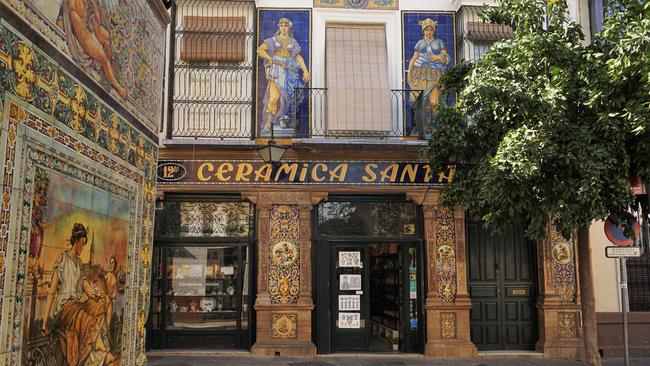
-
7 Just a 40-minute high-speed train ride away, the historic town of Cordoba, like Seville, is a fusion of Roman, Moorish and Christian history and architecture. Cars (but not taxis) are banned from its beautifully preserved historic streets, and its main attraction is the Mezquita de Cordoba, a Catholic cathedral that started out as a mosque. No photograph can fully capture the glorious collision of Muslim and Christian aesthetics; its vast field of ochre and cream double arches are reminiscent of a forest. With its Roman bridge and columns, Moorish-Christian Alcazar and pedestrian-friendly old city, Cordoba in low season feels like an unhurried living museum, worth a couple of nights’ detour from Seville; spain.info.
-
8 If you’re happy to brave the website of Spanish national rail company Renfe — which is only partly in English — a high-speed AVE train journey is a fun alternative to flying between Spain’s major cities. We travelled from Barcelona to Cordoba and, a few days later, from Cordoba to Seville. Barcelona-Cordoba is a nine to 10-hour road journey, but the high-speed train does it in just four hours and 40 minutes. Both rides in our pre-booked Turista class seats were seamless, with reclining seats, plenty of leg room and an excellent cafe service. The AVE trains also give you a front-row seat for magnificent scenery, from craggy slopes and distant snow-capped peaks, to olive farms, vineyards and country villages ageing gracefully; renfe.com.
-
9 We are travelling with a hungry teenager, so are delighted (and relieved) to discover that in Seville, Cordoba and beyond, we can indulge in three-course bistro lunches for between €15 ($25) and €25, far less than you’d typically pay in Australia. My guide book is dismissive of the menu del dia — the deal of the day — but through these specials, we feast on superb home-cooked food including salmon, rabbit, fish soup, steak and paella. The teenager surprises us by ordering Andalusian specialties Rabo de toro (stewed bull’s tail) and a creamy gazpacho, salmorejo. A glass of wine or beer and crusty bread are usually thrown into these deals, a screaming bargain in anyone’s language.
-
BEST BEDS
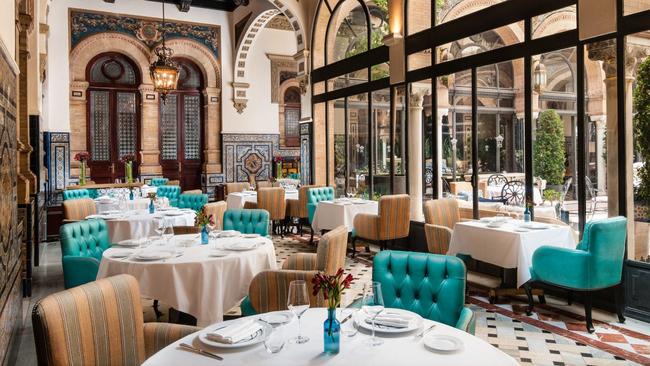
10 Seville is awash with heritage apartments and hotels. For unadulterated old-world luxury, try Hotel Alfonso XIII (pictured), which was built for royals and other VIPs who visited Seville’s 1929 World Fair. Groups or families who prefer luxury apartments could try online booking company Genteel Homes. We stayed in the historic El Arenal district, a few metres from Seville’s bullring, in a large and stylish two-bathroom, two-bedroom apartment with a fully equipped kitchen, separate dining room, four Juliet balconies and traditional tiled foyer, all for the low-season price of $187 a night.

